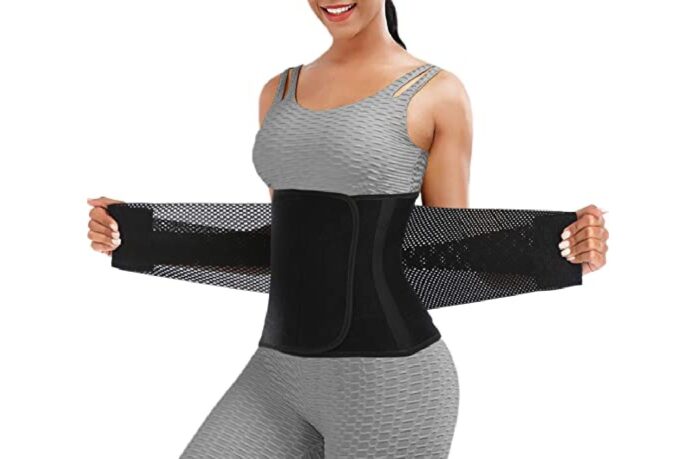Waist trainers have exploded in popularity, often promoted by celebrities and influencers alike. This trending accessory claims not only to perfect your hourglass silhouette but also to assist in belly fat reduction. But just how much of this is marketing and how much is backed by facts? In this deep dive, we unpack the truths, myths, and must-knows about waist trainers and their effect on abdominal fat.
Effects on Body Shape

Historically, corsets have been a popular way to shape the female form. The modern equivalent, waist trainers, uses this ancient principle to compress the midsection, cinching the waist. This compression creates an illusion of a more defined silhouette, especially when worn regularly, by redistributing mass to the hips and bust.
Yet, while the trainers can produce visually appealing results, it’s crucial to understand that these changes are largely cosmetic. The redistribution of fat and skin is temporary, and once it is removed, the body gradually returns to its original state. The speed and degree to which this occurs can vary from individual to individual, depending on factors like skin elasticity and duration of use.
Impact on Belly Fat: Myth or Reality?
There’s a prevalent notion that waist trainers help reduce belly fat. The theory behind this idea is that compression causes an increase in perspiration, which can result in temporary weight loss. And while users may experience weight reduction due to loss of water weight, the effect on belly fat is another story.
The reality is more nuanced. True fat loss occurs through a combination of a caloric deficit, exercise, and other metabolic processes. While waist trainers may induce sweating, this doesn’t equate to the burning of abdominal fat. Sweating can lead to temporary water weight loss, but once you rehydrate, the weight often returns. The genuine reduction of belly fat requires more than just sweating it out.
Temporary Waist Reduction
One undeniable effect of waist trainers is their capacity to temporarily reduce waist size. Much like an elastic band molds its shape around objects, consistent use can slightly alter the contours of your body. But, as emphasized, this alteration is not permanent.
When you stop wearing a waist trainer, especially if its use was short-lived, the body will revert to its original shape. Prolonged use can result in more lasting changes, though it’s essential to note these alterations come from shifting and compression rather than genuine fat loss.
Potential Risks and Side Effects

While waist trainers may offer aesthetic appeal, they aren’t free from side effects. Prolonged and excessive use can result in reduced core muscle strength. Since the core isn’t actively engaged when tightly compressed, over-reliance can weaken these essential muscles.
Another concerning aspect relates to internal organs. Consistent tight compression can shift organs and reduce space in the abdominal cavity, leading to issues like acid reflux, difficulty breathing, and digestive problems. It’s crucial to prioritize safety over aesthetics, and if you choose to wear a waist trainer, doing so in moderation is advised.
Incorporating Healthy Lifestyle Changes
Achieving a toned midsection is best approached holistically. Instead of relying solely on waist trainers, incorporating a balanced diet and regular exercise can yield more lasting and healthful results. Healthy eating habits can help in reducing visceral fat, the harmful fat surrounding internal organs.
It is important not to view waist trainers as a shortcut but rather as a supplementary tool. By integrating nutritious eating habits with physical activity, you can achieve genuine fat loss, making any slimming effect more pronounced and beneficial.
Waist Trainers and Exercise
Integrating waist trainers into exercise routines has become increasingly popular. Some believe it amplifies the workout’s intensity, promoting enhanced calorie burn. While it’s true that waist trainers can induce more sweating during workouts, this doesn’t automatically translate to increased fat burn.
The critical thing to remember is that effective workouts engage core muscles, enhancing strength and stability. If it impedes proper form or restricts movement, it might not be beneficial. If you choose to use one during exercise, ensure that it doesn’t compromise your posture or breathing.
Listening to Your Body

As with any trend, it’s essential to prioritize personal comfort and safety. If a waist trainer feels too tight or causes discomfort, it’s wise to give your body a break. Recognizing signs like numbness, shortness of breath, or sharp pains is crucial.
Remember that everyone’s body is unique. Some may find waist trainers comfortable and beneficial, while others might find them restrictive or painful. It’s always paramount to heed your body’s signals and prioritize well-being over temporary aesthetic gains.
Consultation with Experts
If you’re considering integrating waist trainers into your routine, seeking advice from professionals is crucial. Nutritionists can provide insights into dietary changes that can complement your goals. Fitness experts can offer guidance on exercise routines that target abdominal fat.
Medical professionals can also offer invaluable advice. Before embarking on prolonged use, it’s prudent to consult with a doctor to ensure you’re not risking internal damage or other health complications.
Long-Term Fat Loss Strategies
Short-term solutions like waist trainers only scratch the surface. Long-lasting fat loss demands a multifaceted strategy. Beyond diet and exercise, it’s crucial to manage stress, as elevated cortisol levels can contribute to abdominal fat accumulation.
Prioritizing sleep is another key factor; our bodies undergo essential metabolic processes during rest, which can aid in fat reduction. Lastly, consistency is king. Rather than drastic, unsustainable changes, integrating small, habitual modifications to daily routines can yield progressive and enduring results. By focusing on these holistic measures, you’re laying the foundation for a lifetime of not only looking good but feeling great too.
Final Thoughts

Waist trainers, when understood and used correctly, can be a valuable tool in achieving one’s desired silhouette. However, their efficacy in genuine belly fat reduction remains questionable. Prioritizing holistic approaches, like a balanced diet and exercise, remains the most effective path to a toned midsection. Always remember, while trends come and go, the value of authentic health and well-being is timeless.









